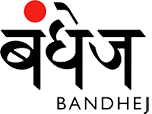
HANDCRAFTED, Sustainable Fashion
Currency

Pashmina
 |
 |
Pashmina is synonymous with the soft, luxurious woollen shawls known as cashmere in the West, as Europeans first discovered this superior wool in Kashmir. The pashm fibre is combed from the underbelly of the mountain goat (Capra hircus) residing in the Tibetan plateau. Pure, handspun pashmina is one of the warmest and most expensive of woollen fibres, and over generations, the Kashmiri artisans have excelled in the art of spinning and weaving the delicate pashm fleece into beautiful shawls.
 |
 |
The pashmina fleece comes from certain breeds of mountain goat such as the changthangi from the Changthang Plateau in Ladakh and Tibet, and the chyangara from Nepal. Till the 1960s, most of the pashm fleece was exported to Kashmir from Tibet, with Ladakh being a mere conduit for the trade. Under the tripartite Treaty of Tingmosgang (1684), the parties to which were the rulers of Tibet, Ladakh and Kashmir, all the pashm fleece was exported to Kashmir. This monopoly over the fleece for hundreds of years has been a source of great wealth for Kashmir. Select traders from Kashmir would be stationed in the nomadic regions during the harvesting season to carry the fibre in its raw greasy state to Kashmir, where it was processed. This delicate fibre needs the sensitive touch of human hands for processing, spinning and weaving into luxurious shawls for the elite. The major centre of pashmina production continues to be in the Eidgah area in the old district of Srinagar, in Kashmir.
 |
There was a growing demand abroad for pashmina and other handicrafts from Kashmir till the early 1990s, and the artisans there earned a decent income by exporting their goods. Today, Kashmir is a troubled region plagued by uncertainties. Retailers no longer feel safe working out of Kashmir and, as a result, the export market for their products has shrunk. The other problem is that there has been no product development or new design inputs. The Kashmiri artisans have incredible skills but these skills need to be revitalised to help them create fresh new products that are relevant in contemporary markets. |
A few artisans I met during my trip in July 2018, complained that their wages had not increased in the last ten to fifteen years. Mohammad Yusuf Shah, an accomplished sozani artisan mentioned “A few years back we earned a decent amount, but wages have not increased, it barely gives us basic sustenance, we can feed the family simple rice and haakh (their local green leafy veg) no luxury of eating any meat, only an occasional treat for his children during festivals”. The beautiful sozani shawls he embroiders sells for over RS.60,000 to 80,000 in the Indian market which would take him a few months to embroider. His wife spins pashmina to earn around Rs. 50 per day, but with no other alternative, this is precious money.
In recent weeks, people of the Kashmir valley have experienced immense trauma and agony, they need our support . . .











